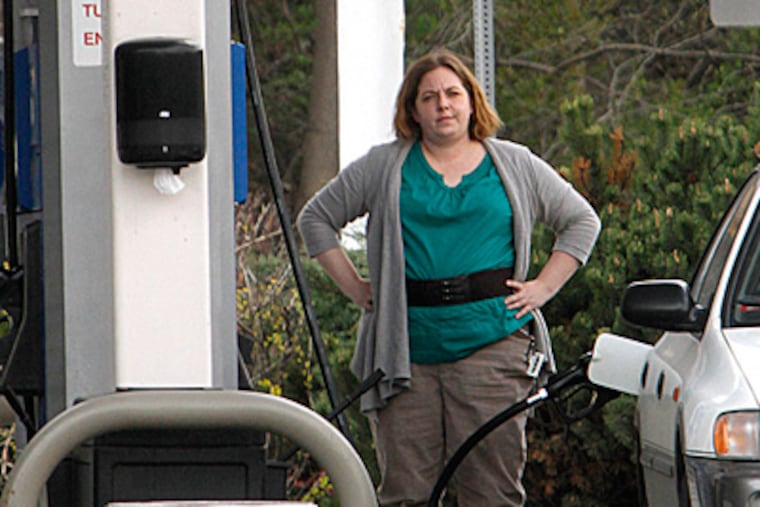After 4-month surge, gasoline prices start falling
NEW YORK — The worst is over, for now. Gasoline prices are starting to fall. After a four-month surge pushed gasoline to nearly $4 a gallon in early April, drivers, politicians and economists worried that gasoline prices might soar past all-time highs, denting wallets, angering voters and dragging down an economy that is struggling to grow.

NEW YORK — The worst is over, for now. Gasoline prices are starting to fall.
After a four-month surge pushed gasoline to nearly $4 a gallon in early April, drivers, politicians and economists worried that gasoline prices might soar past all-time highs, denting wallets, angering voters and dragging down an economy that is struggling to grow.
Instead, pump prices have dropped 6 cents over two weeks to a national average on Friday of $3.88. Experts say gasoline could fall by a nickel or more next week.
Drivers might also get to say something they haven't since October 2009: They're paying less at the pump than they did a year ago.
Gasoline prices are lower than they were a year ago in 11 states, according to the Oil Price Information Service. At $3.88, the national average is still high, but it's down from a peak of $3.94. Predictions of $5 gasoline earlier this year have — mercifully — evaporated.
Tom Kloza, publisher and chief oil analyst at Oil Price Information Service, expects gasoline prices to drop to just above $3.80 by late next week. Stuart Hoffman, chief economist at PNC Financial Services Group, said the falling prices will put more money into the economy for Americans to spend elsewhere. A 10-cent drop in gasoline prices would mean drivers would have an extra $37 million per day to spend on other things.
Gasoline prices rise nearly every spring, and often peak in May.
Gasoline prices have been pushed high by crude prices that have averaged $104 per barrel this year. World oil demand is expected to set a record this year and a series of production outages around the world have kept supplies low.
Oil rose to $110 as the West tightened sanctions on Iran in an effort to make it harder for that country to sell oil and pressure it to abandon its nuclear ambitions. Fears that retaliation by Iran could disrupt Middle Eastern supplies pushed oil prices up by as much as $15 per barrel, experts say.
Closer to home, there were concerns about restricted supplies of gasoline on the East Coast with the closure or threatened closure of three refineries in the Philadelphia area and one in the Virgin Islands. Gasoline futures prices, which are quickly reflected in pump prices, rose to their highest levels in nearly a year.
Prices are not expected to plummet now. But oil prices have fallen in recent weeks, and there are potential buyers for Sunoco's Philadelphia refinery and ConocoPhillips' in Trainer. Gasoline demand has dropped at the pump, and gasoline futures have dropped in response.